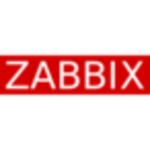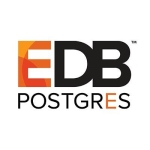
Consultant at a tech services company with 51-200 employees
OEM makes sense for my customers’ needs and makes it easy for me to immediately resolve any problems that arise
Many of our company’s customers have multiple databases. Thus they often need help determining how to consolidate them, monitor them and move forward with their business plans. I bring insight to these customers by showing them how to optimize their IT environments. When it comes to helping customers identify best practices, 90 percent of the time I end up talking about Oracle Enterprise Manager. Many of these customers have adopted Oracle Enterprise Manager 12c as their primary monitoring platform.
I recall a situation with an Atlanta-based tax services company that required extremely high availability during the busy tax season (approximately December 15 and April 15). We had to uphold very strict service level agreements that carried serious penalties and huge financial implications. An unscheduled outage of one hour leads to a $1 million fine. Previously this company used five separate monitoring tools, which was causing extra effort for system administrators and was a source of concern regarding unplanned down time. I spent a few days helping these administrators understand the full potential of a centralized monitoring and management solution based on Oracle Enterprise Manager. It took some convincing and it came down to setting them up with a prototype for the next tax season. Using the new system, they had zero problems and were impressed with the stability. After that, they decided to standardize on Oracle Enterprise Manager as their system management foundation going forward.
I implemented the Oracle Enterprise Manager Database Lifecycle Management Pack, complete with the configuration and change management features, simplifying the Sarbanes-Oxley compliance work necessary for this company’s large government customers. Now they can see what is changing in their environment all the time, which gives them a real-time glimpse into the security of the database. This company’s senior management admitted that without Oracle Enterprise Manager their tax season would not have gone successfully. Day and night, if there were issues, we were notified and we resolved problems immediately.
My take on OEM 12c is that I especially like the performance tuning features since they let DBAs identify problems very quickly. The real time ADDM (Automatic Database Diagnostic Monitor) and associated reports let me drill down into these issues without having to prepare snapshots. I can identify and resolve issues immediately. I also likes the Oracle Enterprise Manager Consolidation Planner, which I find to be an extremely flexible and valuable tool. For example, if a client wants to move to an Oracle Exadata system, you can use the Oracle Enterprise Manager Consolidation Planner to identify precisely how big of an engineered system that client will need. This tool simplifies requirements gathering when you are consolidating to engineered systems.
I recommend Oracle Enterprise Manager because today’s DBAs are being asked to do more with the tools and resources that we are given, to drive change within the organization so that IT teams are more knowledgeable and efficient. Oracle Enterprise Manager empowers database administrators to resolve problems quickly—to identify bottlenecks and pinpoint performance issues. Many DBAs still like the command line, but in my experience the GUI makes it twice as fast to resolve issues. This insight is especially helpful at the outset of a project. Too often DBAs don’t get called in until the end of the development cycle, as somebody who can run the database. But ideally they should have input on the front end of that cycle, while there is still time to identify issues with the SQL code or with other aspects of the hardware or software infrastructure. DBAs can drive the changes that optimize applications and make databases run better.
I believe some Oracle customers are slow to adopt cloud models simply because they don’t realize that Oracle Enterprise Manager can help pave the way. It’s an enterprise tool, not just a database tool. Once organizations understand that Oracle Enterprise Manager can help them manage their whole stack they will realize how much it can help in the context of deploying and managing clouds. Deploying a private cloud is often the first step towards a database as a service environment in which developers can provision databases themselves via a self-service portal. This model has the potential to fundamentally change the way developers do things. You can click a button and clone a database. This will shorten the development cycle, especially with Oracle Database 12c, which lets you provision a pluggable database quickly from a multitenant architecture. Developers can provision what they need and move on. I believe that championing these database as a service environments will elevate the role of DBAs. They can lead their organizations to embrace a new type of fast, efficient provisioning. This will make DBAs more important to the development cycle and push them to the front-end of many projects.
Disclosure: PeerSpot has made contact with the reviewer to validate that the person is a real user. The information in the posting is based upon a vendor-supplied case study, but the reviewer has confirmed the content's accuracy.
Database Expert at a energy/utilities company with 10,001+ employees
Gives us the real monitoring and alerting we need to monitor our database ecosystem from one tool
Valuable Features:
Real-time monitoring we can quickly find the session or queries that are causing issues.
Improvements to My Organization:
With our different platforms running our databases like UNIX, Linux and Windows it becomes difficult to support manually with different type of scripts. With different types of database versions like 9i, 10g and 11g it helps to have one tool that can support them all.
Room for Improvement:
One thing I would like to see is the option of agent less monitoring. I would also like to see monitoring only at LDOM level so if you are using Solaris zones you only monitor at LDOM level.
Use of Solution:
I've been using OEM since version 10g which would have been since 2007.
Initial Setup:
The setup is straightforward the installer guides you during the installation. The installer also has pre-checks to make sure your system is ready for installation or upgrade. For upgrades you have the option of a 2 step system for if you want to move to another server and OS at the time of your upgrade from older versions.
Other Advice:
I would recommend that you try OEM, it can monitor many different products and it has been well designed. When monitoring database performance in real-time I have yet to see another product that can do it as well as OEM.
Disclosure: My company does not have a business relationship with this vendor other than being a customer.
What alternative solutions you have used beside OEM and in which area of customer support you are seeking improvement?
Buyer's Guide
Oracle Enterprise Manager
September 2025
Learn what your peers think about Oracle Enterprise Manager. Get advice and tips from experienced pros sharing their opinions. Updated: September 2025.
868,787 professionals have used our research since 2012.
Database Expert with 51-200 employees
OEM 12c - fairly straight forward on all ends, minor stability issues that resolved itself
What is most valuable?
Real Time monitoring i.e SQL Monitoring and the ADDM
How has it helped my organization?
We have setup dashboards for the SMT (Senior Management Team) to give them a traffic light system on a very high level – enough for them to know that all systems are up and available
What needs improvement?
Costs of add-on’s and management packs i.e AWS (Amazon) and Golden Gate
For how long have I used the solution?
3-4 years across 3 different jobs.
What was my experience with deployment of the solution?
None, quite straight forward (having already deployed and installed weblogic before)
What do I think about the stability of the solution?
Just on a few occasions agent connectivity to repository would fail resulting in “stuck” messages on the OEM screens, resolved itself overnight – weird?
What do I think about the scalability of the solution?
No
How are customer service and technical support?
Customer Service: ExcellentTechnical Support: Excellent
Which solution did I use previously and why did I switch?
Just the old OEM 10g/11g
How was the initial setup?
Fairly straight forward. The download zip files have everything you need in one place and instructions are simple to follow for those who have experience in Oracle installations.
What about the implementation team?
Installed by DBATEAM onsite
What's my experience with pricing, setup cost, and licensing?
Setup costs are absorbed by the Enterprise licenses we already hold, but as we run OEM from Amazon cloud services we have daily costs for server/disk/networks etc. Hard to give a figure as it depends on what Amazon service we use
Which other solutions did I evaluate?
No
What other advice do I have?
If you are already paying for enterprises licenses then it’s rude not to use it!
Disclosure: My company does not have a business relationship with this vendor other than being a customer.
Head of Data Analytics at a manufacturing company with 51-200 employees
Drastically reduced our diagnostic time and helps us monitor multiple instances
What is most valuable?
The performance console is a must.
How has it helped my organization?
Can drastically reduce the diagnostic time and help monitoring multiple instances. Be aware that a lot of the features need appropriate licensing.
What needs improvement?
I would say the footprint on the server. Also the GUI can be tricky.
For how long have I used the solution?
More than 7 years
What was my experience with deployment of the solution?
To uninstall I needed to refer to the documentation.
What do I think about the stability of the solution?
No and it's a good point.
What do I think about the scalability of the solution?
No.
How are customer service and technical support?
Customer Service: Very good.Technical Support: Very good.
Which solution did I use previously and why did I switch?
I used ignite8 which is a must have for the perf part and a lot cheaper.
How was the initial setup?
It requires some reading but nothing is too complex.
What about the implementation team?
Myself.
Which other solutions did I evaluate?
Yes, quest spotlight- too messy. Nothing like AWR.
What other advice do I have?
Give it a try with the version embedded within the database and then go further.
Disclosure: My company does not have a business relationship with this vendor other than being a customer.
Hello,
You mentioned in deployment issues : To uninstall I needed to refer to the documentation.
So can you please share your thoughts on Installation part ?
Consultant at a consultancy with 1,001-5,000 employees
New Features – EM12c 12.1.0.3 – Modify Administration Groups
One very powerful feature in EM12c I think is Administration Groups. It allows you to do a setup of monitoring settings that is continuously up to date.
Monitoring Templates as part of a Template Collections are instantly applied as soon as a Target become member of a Administration Group within its hierarchy.
One issue you could have with the setup of an Application Group Hierarchy is that, after creating it you could not change it anymore and had to delete it before being able to make corrections or extend.
Starting EM12c 12.1.0.3 we can now modify an Administration Group Hierarchy after is has been created, which I think is a very welcome enhancement!

In the example one level (Location) is added to an existing Hierarchy. The message in the page indicates that the change need to be save to the repository by pressing [Update]
After pressing the [Update] button a message shows up, telling you a job has been started to reorganise the Administration Group Hierarchy and you need to wait for it to finish.

After the job has finished and you redisplay the page, the modification is completed.

Disclosure: My company does not have a business relationship with this vendor other than being a customer.
There are some other very powerful features of EM12c like its capability to manage oracle applications including Oracle Fusion Applications, Siebel, Oracle E-Business Suite and PeopleSoft.
EM12c also provides broad range of solutions for managing Oracle Databases, from performance management and database testing, to database lifecycle.
Consultant at a tech services company with 10,001+ employees
Oracle Enterprise Manager for hybrid cloud monitoring
This post is syndicated from https://johanlouwers.blogspot.com/2013/07/oracle-enterprise-manager-for-hybrid.html
Cloud computing comes in many forms, in some cases cloud computing is “just” another form of hosting and it is considered an IaaS (Infrastructure As A Service). In this cloud computing model some of your servers / systems will be located within the cloud of a cloud vendor. Amazon is a good example of this. By having your servers in one or more cloud and some (or none) located in your traditional datacenter you start creating a hybrid cloud model.Having a hybrid cloud model provides you the options to make sue of the best of breed hosting options. This can be a big advantage however in some cases also brings a challenge. Even though everything can be hosted somewhere in a cloud you most likely would like to have a unified monitoring in place which gives you a holistic view of all your servers and services.
Monitoring capabilities, which provide you a holistic overview of your Enterprise IT assets are provided for Oracle products and none Oracle products by Oracle Enterprise Manager. Oracle Enterprise Manager provides you with options to monitor hardware and software within your Oracle landscape and also maintain it from the same console.
Oracle is providing a great, out of the box, solution when monitoring your on premise IT assets and it can even monitor in multiple datacenters when you have a dual or triple datacenter setup. However, in some cases you have servers running within the Amazon Web Service (AWS) hosting cloud. This is a trend that is seen more and more within the corporate world. Even though some of your servers are running at AWS you still want to include them in your default monitoring tool, Oracle Enterprise Manager and be able to monitor the complete hybrid cloud setup.

In the above example you can see how we leverage an already available tunnel between the enterprise datacenter and AWS to ensure that the OEM connection is secured and encrypted on a network layer. Connecting the datacenter and AWD in such a manner is common practice and when connecting Oracle Enterprise Manager to the servers in AWS you can leverage this tunnel to do so.
Oracle is providing a plugin for this in the Oracle Enterprise Manager extensibility exchange. This plugin is developed by Oracle to monitor the AWS services and by doing so provide you a single monitoring console.
- Support for monitoring the following Amazon Web Services:
- Amazon Elastic Block Store (EBS)
- Amazon Elastic Compute Cloud (EC2)
- Amazon Relational Database Service (RDS)
- Rich and exhaustive list of metrics. Metrics are collected remotely using the Amazon Web Services Cloudwatch API.
- Detailed configuration information.
- Custom Home Pages with charts and AWS configuration information.
- Raise alerts based on thresholds set on monitoring data.
The plugin is available for Oracle Enterprise Manager 12.1.0.2.0 and later. More information can be found at the Oracle Enterprise Manager exchange website, the documentation can be found here.
Disclosure: My company does not have a business relationship with this vendor other than being a customer.
Hi Johan,
We currently have a small data center operations environment, having only fewer than 10 servers. However, we do have Oracle Peoplesoft Campus Solution deployed on a fully-virtualized system on a Cisco UCS blade server system. Our application servers are Oracle, but our back-end database is MS SQL Server. We currently don't have any application performance monitoring and asset management solution.
Would you recommend Oracle Enterprise Manager for this relatively small set-up? We are also looking at MS System Center Configuration Manager, but I think this is a better product considering the Oracle system that we have. I'm quite impressed with the reviews of this product here on IT Central Station and looking for valuable advise on this.
eCommerce Expert at a computer software company with 501-1,000 employees
It is about best service levels for traditional and cloud applications through business-driven application management.
Valuable Features:
• Enterprise Manager 12c comes with an out-of-box self-service application that lets end-users deploy a wide range of these services.
End users can choose to manage and monitor all applications along with databases and platforms/OS, all in an on-demand fashion. For each request, they can specify the amount of underlying resources (CPU, memory, etc.) that they require for each component.
• Enterprise Manager automatically provisions the requested service and the appropriate resources. The self-service application also lets users define policies to scale out or scale back resources based on schedule or performance metrics.
For example, one can set a policy to elastically scale out a web server if the processor load on existing web servers exceeds a certain threshold value.
• It allows management of sophisticated Oracle applications, like Oracle E-Business, Siebel, and PeopleSoft, aiding in many administrative activities of these apps, like real user monitoring of any web application.• Enterprise Manager 12c has the ability to define contractual Service Level Agreements (SLAs) that govern the contract between the application owner and the provider of the Cloud. Administrators, as well as users, can also define management policies that automatically adjust the service resources, to ensure that SLAs are met.• Enterprise Manager enables the application for the end-user via a self-service interface, both in graphical (GUI) .
Room for Improvement:
The only con is that we may need to install patches provided by Oracle from time to time for its upgrades or bug fixes. This is an activity that occurs quite frequently.
Other Advice:
Oracle Enterprise Manager 12c, is a transformational technology that comes with a set of comprehensive features and great practices, that help IT transform into a true enterprise Cloud that delivers on business needs.
It offers a single integrated console for testing, deploying, operating, monitoring, diagnosing, and troubleshooting, today’s complex and wide IT environments. It offers a simple scalable solution for running Oracle applications. It enables you to manage everything in your datacenter, from the hypervisor to the operating system, database, and application tier. I have used this technology for quite a long time and found that Oracle Enterprise Manager is the industry’s first solution that has the ability model, not only infrastructure as- a-service (IaaS), but also platform-as-a-service and database-as-a-service Clouds, from a single console.
The extent of usage of Oracle Enterprise Manager depends upon nature & the size of the organization and management’s concerns. However, Oracle Enterprise Manager provides a full board of controlling & monitoring as per your needs.
Disclosure: My company does not have a business relationship with this vendor other than being a customer.
it was suppose to be an overview with pros and cons of the product. Comprehensive functionality comes under USER MANUAL and this is not a user manual.
DBA Team Lead at a tech services company with 51-200 employees
A stable monitoring tool that shows the performance of Oracle products and databases
Pros and Cons
- "We use Oracle Enterprise Manager as a tool to monitor Oracle products."
- "The solution's agents work with Java, and the Java code sometimes consumes a lot of memory on the CPU."
What is most valuable?
We use Oracle Enterprise Manager as a tool to monitor Oracle products. It's a monitoring tool that shows the performance of your Oracle database or many other products.
What needs improvement?
The solution's agents work with Java, and the Java code sometimes consumes a lot of memory on the CPU.
For how long have I used the solution?
I have been working with Oracle Enterprise Manager for five years.
What do I think about the stability of the solution?
I rate Oracle Enterprise Manager ten out of ten for stability.
What do I think about the scalability of the solution?
Around five to seven users use the solution in our organization.
I rate Oracle Enterprise Manager ten out of ten for scalability.
How was the initial setup?
I rate Oracle Enterprise Manager ten out of ten for the ease of its initial setup.
What about the implementation team?
Oracle Enterprise Manager can be deployed in one hour by one person. You deploy the Oracle Enterprise Manager server, then deploy the agents to the targets you want to monitor.
What's my experience with pricing, setup cost, and licensing?
Oracle Enterprise Manager is a free tool from Oracle.
What other advice do I have?
Overall, I rate Oracle Enterprise Manager a nine out of ten.
Which deployment model are you using for this solution?
On-premises
Disclosure: My company does not have a business relationship with this vendor other than being a customer.
Buyer's Guide
Download our free Oracle Enterprise Manager Report and get advice and tips from experienced pros
sharing their opinions.
Updated: September 2025
Popular Comparisons
Microsoft Configuration Manager
ScienceLogic
SolarWinds Server and Application Monitor
ServiceNow Discovery
Foglight for Databases
SolarWinds Database Performance Analyzer
SAP Replication Server
Nutanix Database Service
Toad for Oracle
IBM InfoSphere Optim
EDB Postgres Enterprise Manager
Buyer's Guide
Download our free Oracle Enterprise Manager Report and get advice and tips from experienced pros
sharing their opinions.
Quick Links
Learn More: Questions:
- Can someone please share if they did a vendor comparison, why they chose Oracle Enterprise Manager?
- How do the various System Monitoring solutions compare?
- Oracle Enterprise Manager vs. Foglight for PeopleSoft Applications?
- What is the difference in license models of these Oracle products: OCI APM and OEM APM?
- What is the best GUI tool for development and management of a PostgreSQL database?
- What is the best backup solution for Sybase ASE 15.5?
- Which Database Activity Monitoring tool is best for cloud environments?
- What are your top recommended replacement solutions for Quest Foglight for Databases?
- Which low-code (no-code) database solution do you prefer?
- Why is Database Development and Management important for companies?















Hello Bobby Curtis,
Nice Article, very well explained, through this article I came to know how OEM can solve complex business process.
And I request you to provide some more information on OEM Consolidation Planner.